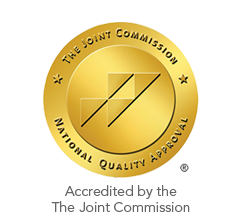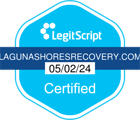Depression and Addiction:
Dual Diagnosis
Depression and addiction, when they appear together, are known as a dual diagnosis. It may also be called a co-occurring disorder, which is when someone with a drug or alcohol issue along with another mental health problem. For many people, it is difficult to know which problem came first since a dual diagnosis can develop in one of two ways:
- Long-term use of alcohol or drugs affects the brain and leads to the development of a mental health disorder.
- Someone with a mental health condition turns to alcohol or drugs which makes the symptoms of mental illnesses worse rather than better.
Depression and Addiction Statistics
Dual Diagnosis by the Numbers
The National Survey on Drug Use and Health for 2018 showed that over 9 million adults in the United States were diagnosed with both a mental health illness and a substance use disorder (SUD).
Researchers also found that lifetime dual diagnosis rates can vary by race or ethnicity. Rates of dual diagnosis in the total population include:
Of all Americans with SUDs, 20% also have at least one mood disorder, and 18% have anxiety disorders. Millions of Americans are dealing with mental disorders and addiction, so it is important to understand the condition in depth. Better understanding and awareness help promote improved prevention, intervention, and treatment options.


Depression by the Numbers
The National Survey on Drug Use and Health for 2017 stated that among Americans over the age of 18:
It is estimated that 5% to 25% of Americans with a co-occurring disorder have both a depressive and substance use disorder. Those who abuse depressant substances, such as sedatives or alcohol, are at high risk for developing depression. A vicious cycle can develop between clinical depression and alcohol and/or drugs. Without the right treatment plan, it is difficult to break the harmful cycle between depression and substance abuse.
Be Brave. Get Help.
What is a Dual Diagnosis for Alcoholism and Depression?
Professional treatment can help manage the risks of depression and alcohol abuse. Co-occurring disorders can make it more challenging to maintain sobriety. It also raises the risk for attempting or committing suicide. Formal treatment helps diagnose all disorders and treats them at the same time.
How are Depression and Addiction Related?
Alcohol or drugs may provide temporary relief, but when substances leave the body, a “crash” occurs. This can cause a more serious depression than before – called withdrawal depression. Withdrawal depression usually occurs each time the substance leaves the body. Withdrawal alone can drive a person to use more alcohol or drugs because it will stop the withdrawal symptoms.
Addiction can develop when this cycle of taking drugs or alcohol, “crashing,” and taking more substances for relief keeps happening.
- Emptiness, sadness, and anxiousness
- Hopelessness, having a gloomy outlook
- Irritability
- Guilty feelings
- Worthlessness
- Helplessness
- Loss of interest or lack of pleasure towards formally enjoyable things
- Lethargy
- Fatigue
- Sleeping too much
- Changes in appetiteEmptiness, sadness, and anxiousness
- Hopelessness, having a gloomy outlook
- Irritability
- Guilty feelings
- Worthlessness
- Helplessness
- Loss of interest or lack of pleasure towards formally enjoyable things
- Lethargy
- Fatigue
- Sleeping too much
- Changes in appetite
- Weight gain or loss
- Concentration or memory problems
- Moving and/or talking more slowly
- Restlessness
- Edginess
- Decision-making difficulties
- Hard to “shake off” sleep
- Aches, pains, headaches, or stomach aches that treatment cannot help
- Thoughts of death and/or suicide
- Suicide attempts
Does Depression Come Before or After Drug Abuse?
Depression and Drug Abuse
Though it is not always easy to find out whether drug abuse or depression came first, both conditions share certain triggers, including:
- Similar brain areas are affected by both drug abuse and depression. For example, drug abuse affects parts of the brain that handle stress responses. Those same areas are affected by depression.
- Genetics can play a part in whether a person will be more likely to develop depression or addiction. Genes also play a role in determining if one condition will develop once the other condition has appeared.
- Early drug use is known to harm brain development. This makes depression more likely later in life. Conversely, early depression in life can boost the chances of later drug abuse.
Drug-Related Depression
What is Serotonin Syndrome?
Serotonin syndrome can be caused by drugs such as:
- SSRIs antidepressants
- MAOIs antidepressants
- Amphetamines
- Cocaine
- MDMA (Ecstasy)
Serotonin syndrome can come from:
- Prescription medication use
- Unexpected interactions between medications or recreational drugs
- Overdose
Symptoms of serotonin syndrome can include:
- A mild to dangerous change in mental status
- Neurological problems
- Muscular contractions and relaxations (twitches or spasms)
- Dilated pupils
- Flushed skin
- Nausea
- Vomiting
- Anxiety
- Confusion
If you experience any of these symptoms, contact your doctor immediately, or seek emergency medical care.
Treatments
- People who had depression before substance abuse need longer treatment programs, including medications.
- People whose depression came from substance abuse will not need the same treatment since depression will likely fade when substance abuse stops.
Detoxification
Residential or Outpatient Rehab
- How long the addiction or depression has existed
- The severity of the depression symptoms
- The seriousness and length of the addiction
- The person’s living situation (stable or unstable)
- If the person is a danger to themselves or others
Medications
- Medications can help stabilize a person in rehab
- Antidepressant drugs help relieve depressive symptoms
- Alcohol anti-craving medications can be prescribed
- People with opioid addictions can also benefit from medications
- Drugs like methadone can help maintain sobriety while in treatment
- Maintenance drugs after treatment are also an option
Therapies for Co-Existing Depression and Substance Abuse
Cognitive Behavioral Therapy (CBT) effectively treats both substance use disorders (SUDs) and depression. CBT teaches strategies and skills for dealing with problem behaviors. It also teaches people how to cope with depressive thoughts. CBT counselors work with clients to identify their substance use patterns. This knowledge is used to help prevent alcohol or drug use.
CBT can also be used to treat depression. CBT helps identify and change distorted thoughts that can lead to feeling depressed. CBT looks at the relationships between substance use and depression. It explores how not taking drugs or alcohol can improve depression symptoms. CBT also works on how depressive moods can affect judgment and lead to using drugs and alcohol.
Dialectical Behavioral Therapy DBT works well for those with SUD and depression. DBT needs a strong client-therapist relationship as a foundation. The client commits to changing problem behaviors and feelings. Once these behaviors and feelings are identified, the counselor guides the client towards ways to change. Positive alternatives and new coping skills are also explored.
REBT helps individuals reduce or drop self-defeating thoughts to help them feel better. REBT also teaches flexibility when dealing with difficult situations. REBT assumes that some unreasonable thoughts about how life should and how others should behave are normal and common. REBT therapists work on challenging these unreasonable thoughts and illogical beliefs. This helps clients develop more realistic behaviors and thoughts that are less counterproductive.
When depression holds people back, the reason may be found in the brain’s memory networks. In many cases, the problems lie in unprocessed past memories. These past memories sabotage the present. EMDR helps identify memories that are at the root of problems. It is also used to change the emotions, physical sensations, and negative thoughts that these memories can cause. EMDR techniques help clients reach their desired goals in personal and work relationships. Once these techniques are learned, life becomes more manageable.
EMDR directly treats depression-related feelings and beliefs of not being good enough, fearfulness, and not being in control. When these feelings and beliefs dominate, people tend to blame themselves. EMDR clients discuss the events they have experienced. During this discussion, they describe the negative emotions, physical sensations, and beliefs they’ve experienced. At the same time, clients move their eyes back and forth in sweeping eye movements.
The goal is to help people identify all the persistent thoughts that lead to depressive symptoms. Memories are reprocessed, the negative emotions, physical sensations, and past beliefs are cast off, and a positive self then emerges.
Motivational interviewing creates quick, self-driven changes about alcohol/drug use and depression. MI sparks internal motivation to change problems using inherent strengths and resources.
Twelve-step support groups can effectively help treat SUDs and depression. Peer social support, camaraderie, and advice from others are just some of the benefits of 12-step groups. Alcoholics Anonymous (AA) introduced the 12-steps in 1935. In 1989, a group network was founded called Double Trouble in Recovery (DTR). It is a 12-step self-help group made to address the special needs of people with a dual diagnosis. DTR is different from traditional self-help groups because it offers members a safe place to talk about their mental health disorders, treatment plans, and substance used disorders.
Educational groups help people learn about SUDs and depression. These groups teach specific details about depression and recovery, such as:
- Addiction
- The consequences of substance abuse
- Preventing relapse
- Managing stress
- Why substance abuse recovery helps improve depression
Depression and Addiction Recovery
People with drinking problems and depression may find it difficult to get through social occasions where others are drinking. Feeling bad about being depressed can trigger drug-taking. Here are some tips that help people in recovery from depression and addiction:
Forming a reliable, sober support network. Inviting others with depression who are in recovery into the network. This helps relate more easily to people who understand what they are going through.
Avoid people, places, and things that can bring on urges, cravings, and depression symptoms. Some special events, such as weddings or job functions, may be unavoidable. These events may also trigger drinking or depressed feelings, so preparation is key. Bringing along someone from your support network can be helpful along with setting a time limit before the event. For example, planning to greet people, give congratulations, and then leave after an hour. If an event will likely trigger depressive symptoms or alcohol cravings, it may be advisable to skip the event. This is especially true in the early stages of recovery.
Saying no is hard, but powerful. People will not stop drinking around those in recovery. They will also not stop offering those in recovery things that may not be good for them. Those in recovery can prepare for these situations by working on their ability to refuse.
How To Help Others
Keep in mind that depression is a real mental illness that should be treated by health professionals. You can play a key role by making sure your loved one gets professional help. If the person is reluctant to get help, reassure your loved one that depression is common and formal treatment works.
You can provide practical support by accompanying your loved one to appointments. You can also provide gentle reminders about medications, routines, and schedules. These types of practical support can help your friend or family member stay on track.
Emotional support is important too. Tell your loved one that you understand this is a difficult time. Express your love. Be there when they want to talk about feelings or depression. Listen well. Offer words of encouragement. Remind your loved one that treatment can be quite effective, but that it may also take time for symptoms to improve.
Finding Help for Depression and Substance Abuse
- “Dual Diagnosis.” NAMI, National Alliance on Mental Illness
- Mericle, A. A., Ta Park, V. M., Holck, P., & Arria, A. M. (2012). Prevalence, patterns, and correlates of co-occurring substance use and mental disorders in the United States: variations by race/ethnicity. Comprehensive Psychiatry, 53(6), 657–665.
- Ibid.
- https://www.samhsa.gov/data/sites/default/files/cbhsq-reports/NSDUHDetailedTabs2017/NSDUHDetailedTabs2017.htm#tab8-56A
- Ibid.
- Ibid.
- Center for Substance Abuse Treatment. Detoxification and Substance Abuse Treatment. Rockville (MD): Substance Abuse and Mental Health Services Administration (US); 2006. (Treatment Improvement Protocol (TIP) Series, No. 45.) 5 Co-Occurring Medical and Psychiatric Conditions.
- Ibid.
- Quello, S. B., Brady, K. T., & Sonne, S. C. (2005). Mood disorders and substance use disorder: a complex comorbidity. Science & Practice Perspectives, 3(1), 13–21.
- “Depression: What You Need To Know.” National Institute of Mental Health, U.S. Department of Health and Human Services
- L.D. Ortíz-Gómez, B. López-Canul, G. Arankowsky-Sandoval, Factors associated with depression and suicide attempts in patients undergoing rehabilitation for substance abuse, Journal of Affective Disorders, Volume 169, 2014, Pages 10-14, ISSN 0165-0327
- Rogers, D., & Pies, R. (2008). General medical with depression drugs associated. Psychiatry (Edgmont (Pa. : Township)), 5(12), 28–41.
- Simon LV, Hashmi MF, Keenaghan M. Serotonin Syndrome. [Updated 2019 Sep 29]. In: StatPearls [Internet]. Treasure Island (FL): StatPearls Publishing; 2019 Jan.
- Ibid.
- Ibid.

 Matthew Beck B.A, M.A, LMFT
Matthew Beck B.A, M.A, LMFT 


